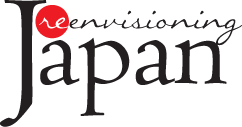Technical Details
An updated and revised version of this page is available at the new Re-Envisioning Japan.
All digital assets, with the exception of moving images (details below), were created in the University of Rochester Digital Humanities Center using either commercial flatbed scanners or a photographic copy stand. Digital photographs were captured in camera RAW format and then converted to 150 dpi JPEG files for online presentation. Scanned assets were captured as 600 dpi TIFFs and also converted to 150 dpi JPEG files for website display.
Multi-page documents were created by bundling images into multipage PDF documents presented through the University of Rochester River Campus Library’s licensed instance of Devaldi Ltd.’s Flexpaper API.
The website was built using highly customized versions of the Toolbox Wordpress theme and Nextgen Gallery from Photocrati Media (both open source) to display individual images.
Unless otherwise noted, moving images were scanned at 1920×1080 un-compressed with a pillar box to maintain the correct aspect ratio, using the da Vinci color corrector to recover the color of faded prints. Scans were made at 24fps, with some dust busting to clean each film of artifacts. An Apple pro res 4:2:2 HQ 1920×1080 file was made for each film. The moving images were then transcoded with additional color correction using the H264 codec, using the open source software ffmpeg.
Preservation, Storage, and Disaster Recovery
The digital assets are currently stored on 2 terabytes of storage disks in a regular file structure. The library’s storage and server technology is located in a climate-controlled, secure state-of-the-art server room that uses a combination of tape backups and redundancy to ensure data integrity. Preservation copies of still and moving image files and MODS metadata files will be deposited in the library’s Fedora Digital Repository by the end of 2016 (the repository technology is still in the development stage), providing long-term data integrity and disaster recovery. The project’s website is hosted in the RCL’s virtual server environment, which is backed up by a dedicated VEEAM server capable of restoring the full website in less than one hour to full functionality in the case of server failure with no loss of data.
Cataloging and Access in Islandora
All of the project’s digital files will be catalogued using the Metadata Object Description Schema (MODS) metadata schema, which provides an extensible and flexible framework for the interoperability and description of humanities data, and is the current format used by the Library of Congress. Using MODs will also allow the freely available data to be accessed by researchers and scholars through other search engines using the Open Archives Initiative Protocol for Metadata Harvesting (OAI-‐PMH), the accepted standard for creating interoperable data discovery on the Internet. The Fedora Digital Repository is OAI-‐PMH compliant. A simple, easy to use database user authentication system will be used to control access to materials in the collection. The project team members will be able to assign access rights to registered users for files in the system based on the permissions of the files, a core component of the Islandora Digital Asset Management architecture used by the River Campus Libraries to manage the Fedora Repository.
Dissemination and Access
The University of Rochester will continue to provide public access to the Re-Envisioning Japan online project for as long as the website architecture is viable and can be supported; the RCL will steward the online interfaces and digital assets in a manner consistent with library owned assets.

